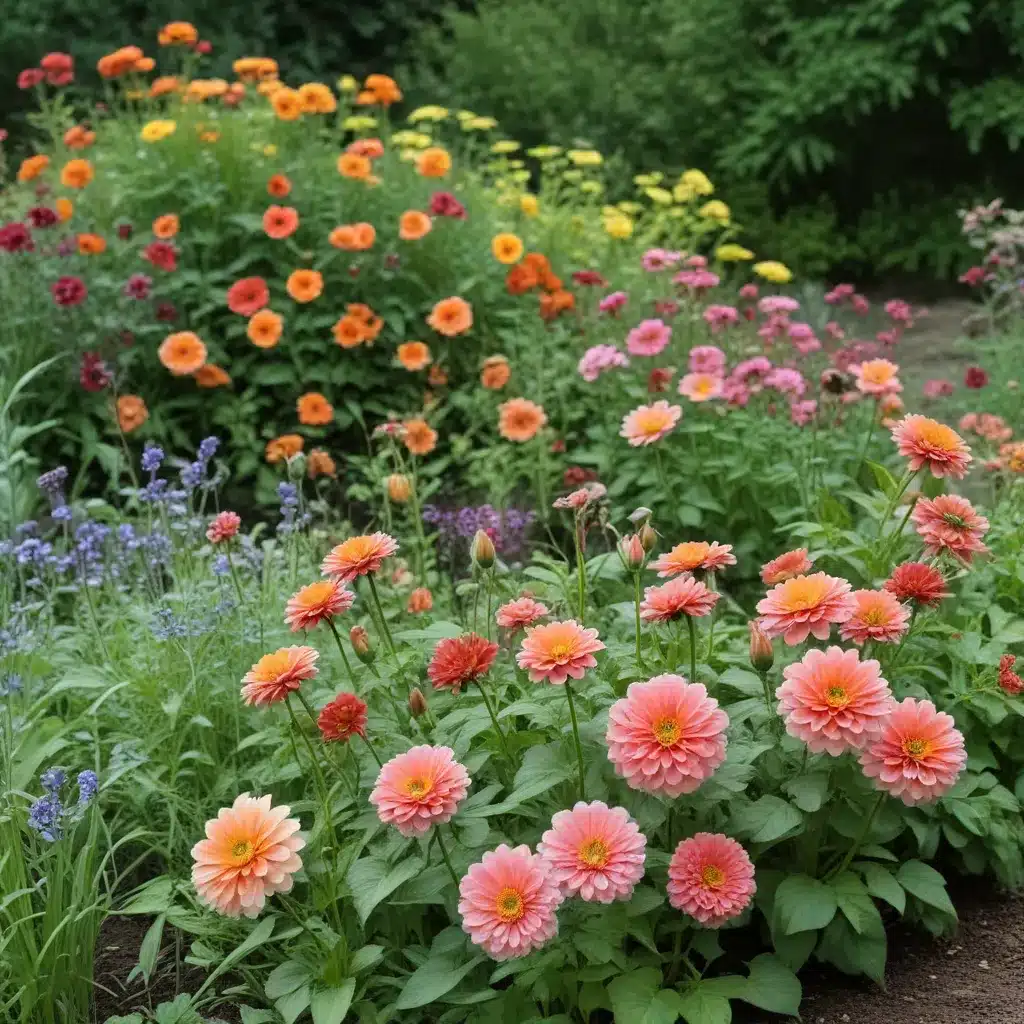
Crooked Pines Farm is the perfect place to unleash your inner flower farmer. With ample sunshine and well-drained soil, our little corner of the countryside provides an ideal setting for cultivating a lush cutting garden – a dedicated plot brimming with an array of blooms to snip, arrange, and enjoy throughout the seasons. Whether you dream of elegant bouquets adorning your kitchen table or whimsical posies to gift friends, growing your own cut flowers offers boundless creative possibilities.
Planning Your Cutting Garden
Site Selection and Preparation
The first step in creating a successful cutting garden is selecting the right spot. Look for an area that receives at least six hours of direct sunlight per day – most flowering plants thrive in full sun. Once you’ve identified your sunny plot, take the time to properly prepare the soil. Conduct a soil test to determine the pH and nutrient levels, then amend accordingly by incorporating well-rotted compost to improve drainage and fertility. Consider laying down a weed barrier fabric to minimize pesky interlopers.
Choosing Suitable Plant Varieties
With your garden bed prepped and ready, it’s time to curate your cutting flower collection. When selecting plants, think beyond the typical supermarket bouquet suspects. Annuals, biennials, and perennials all have their place in the cutting garden, offering a diverse array of shapes, sizes, and bloom times. classics like dahlias, roses, and zinnias make wonderful focal flowers, while snapdragons, celosia, and larkspur lend vertical interest. Don’t forget about fragrant filler flowers like feverfew, bachelor’s buttons, and sweet peas. For year-round greenery, incorporate eucalyptus, sedum, and ornamental kale.
Timing and Planting Techniques
Successful cutting gardens thrive on strategic planting. Some species, like spring-blooming tulips and daffodils, are best planted in autumn. Other annuals and tender perennials should wait until the last frost has passed before going in the ground. Take advantage of succession planting, replacing early spring bloomers with summer stunners and fall favorites. When arranging your plants, orient them in narrow, accessible rows to facilitate easy harvesting.
Caring for Your Cutting Garden
Watering and Fertilizing
Consistent, moderate watering is key for keeping cut flower crops healthy and productive. Use a soaker hose or drip irrigation system to deliver moisture directly to the roots, avoiding wet foliage that can invite disease. Supplement with a balanced organic fertilizer every few weeks during the growing season to ensure your plants have the nutrients they need.
Pest and Disease Management
An abundance of lush, nectar-rich blooms can attract both desirable and undesirable visitors to your cutting garden. Proactively monitor for common pests like aphids, thrips, and spider mites, employing integrated pest management strategies like hand-picking offenders and using beneficial insects to restore the ecological balance. Stay vigilant for foliar diseases as well, promptly removing any infected plant material.
Deadheading and Harvesting
Regular deadheading – the removal of spent blooms – encourages your cut flowers to redirect their energy into producing more flowers rather than setting seed. When harvesting, use clean, sharp pruners to snip stems at an angle, leaving adequate foliage behind. Submerge freshly cut flowers in water as soon as possible to maximize their vase life.
Designing with Cutting Garden Flowers
Color and Texture Considerations
Approach your cutting garden as you would any floral arrangement, considering color, form, and texture. Group plants with complementary hues, such as the peachy-pink ‘Camelot Cream’ foxglove paired with purple ‘Champagne’ ranunculus. Incorporate a variety of flower shapes, from the rounded dahlias to the spiky celosia, to create visual interest. Foliage plants like eucalyptus and sedum lend lovely accents.
Floral Arrangement Techniques
Mastering a few basic floral design principles will elevate your homegrown bouquets. Start with a sturdy focal flower as the foundation, then layer in wispy filler flowers and lush greenery. Play with asymmetrical compositions, allowing the natural movement and form of the plants to guide your hand. Experiment with different vase shapes and heights to showcase the unique attributes of each bloom.
Seasonal Blooms and Succession Planting
By thoughtfully planning your cutting garden, you can extend the season of available flowers. Pair spring-blooming poppies and tulips with summer-loving zinnias and cosmos, then transition to autumn stars like chrysanthemums and sunflowers. Don’t forget to incorporate winter-friendly evergreen branches, dried seed heads, and forced bulbs to keep the creativity flowing all year round.
Extending the Cutting Garden Season
Fall and Winter Flowering Plants
While the main cutting garden may begin to wind down as winter approaches, there are still plenty of opportunities to enjoy homegrown blooms. Hellebores, camellias, and beautyberry bring welcome color and texture to holiday arrangements, while forsythia, quince, and willow branches can be forced indoors for a taste of spring. Tuck lavender, rosemary, and sage into your garden’s edge to harvest fragrant stems for potpourri and teas.
Protecting Plants from Elements
To ensure your cutting garden thrives year-round, take measures to shield plants from extreme weather conditions. In fall, carefully mulch dahlias and other tender perennials before the first frost. For winter, construct cold frames or low tunnels to insulate delicate species. Employ row covers or shade cloth to moderate temperature swings during the hotter months.
Storage and Preservation of Blooms
Extend the life of your cut flowers by employing proper postharvest techniques. Immediately submerge freshly harvested stems in lukewarm water, then store them in a cool, dark place until ready to arrange. Experiment with pressing, drying, and glycerin treatments to preserve seasonal favorites for year-round enjoyment. With a little creativity, you can transform dried flowers into everything from framed artwork to handcrafted jewelry.
Whether you’re a seasoned flower farmer or just embarking on your cutting garden journey, Crooked Pines Farm offers the perfect canvas to unleash your inner horticulturist. By thoughtfully planning your plant selections, dedicating time to hands-on maintenance, and exploring innovative design techniques, you can cultivate a lush, ever-blooming floral oasis to enjoy throughout the seasons. So, gather your pruners, don your garden gloves, and let the creative flower arranging commence!


